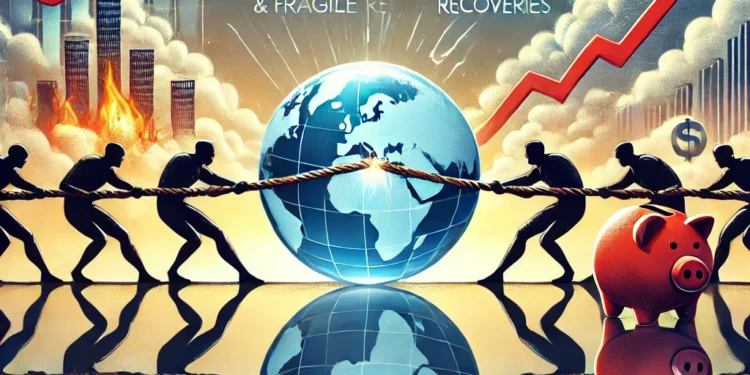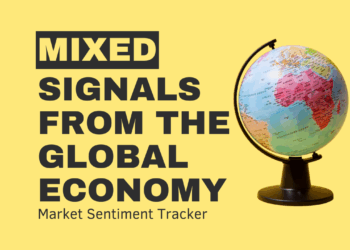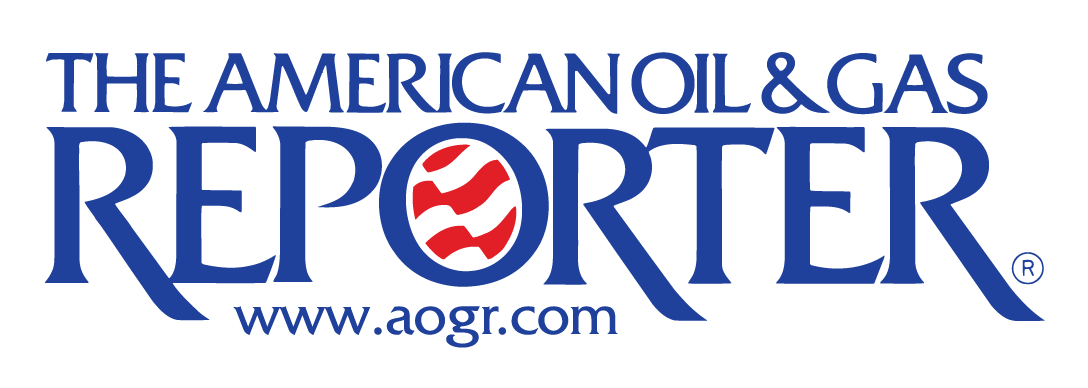The global economy is moving—but not without friction. The U.S. is pushing forward, but inflation is still a stubborn shadow. The Eurozone is seeing flickers of improvement, but Germany’s dragging the bloc down hard. And China? Riding high on a post-holiday consumption wave, but under the surface, some cracks are starting to show. Here’s this week’s market pulse:
United States and the World
The U.S. remains the world’s economic anchor, showing strength that’s hard to ignore. New York Fed President John Williams sees real GDP growth holding steady at 2% through 2025-26, while the Philadelphia Fed raised its Q1 forecast from 1.9% to 2.5%. This marks the ninth straight month the U.S. has led major developed economies—a streak that’s keeping market sentiment upbeat. Markets are responding: the U.S. 10-year bond yield climbed to 4.55%, signaling confidence in growth, and the dollar index ticked up to 108, reflecting stronger demand for U.S. assets.
But beneath the optimism, inflation worries aren’t going anywhere. The Philly Fed sees Q1 CPI at 3%, still too high for the Fed’s comfort. Jobless claims are creeping up to 214K, a small rise but enough to suggest labor market cracks. Globally, business activity expanded for the 24th month straight, but here’s the catch—it’s the slowest pace in a year. The U.S. may be ahead, but the road forward still has bumps.

Eurozone
The Eurozone’s economic story is a blend of cautious optimism and stubborn headwinds. The European Commission is holding on to its recovery forecast for 2025, and there are some data points backing that up. The January HCOB Manufacturing PMI was revised up to 46.6 from 46.1—not great, but better than expected. Plus, the Eurozone’s GDP managed to grow 0.1% quarter-on-quarter in Q4 2024. But the cracks are deep, and Germany is at the center of them. High energy costs, lingering from the post-Ukraine war crisis, are hammering manufacturers. Berlin’s strict debt brake rules are choking public investment in infrastructure and education. As a result, Europe’s largest economy shrank for a second consecutive year—its worst performance in 20 years.
France isn’t doing much better. The Bank of France expects GDP to crawl between 0.1% and 0.2% in Q1, while uncertainty around growth remains high. The takeaway? The Eurozone may be stabilizing on paper, but the engines driving its economy—Germany and France—are sputtering.

China
China is making headlines with a post-holiday spending surge that’s hard to ignore. During the Spring Festival, daily sales revenue in consumption-related sectors jumped 10.8% year-on-year, while cross-border travel orders soared 30%, showing that consumer appetite is alive and well. Citi is calling it a “robust start to the Year of the Snake,” driven by strong domestic momentum. The lending spree is adding fuel to the fire. Chinese banks extended a massive 5.13 trillion yuan ($706.4 billion) in new loans in January—more than four times December’s figure. Outstanding loans grew 8% year-on-year, up from 7.6%. Meanwhile, total financing to the real economy hit 7.06 trillion yuan ($973.1 billion), a jump of 583 billion yuan from last year—clear signs that credit is flowing fast.
But there’s a snag. M2 money supply—a key indicator of liquidity—slowed to 7% year-on-year, down from 7.3%. It’s a small drop, but it raises a big question: Is liquidity starting to tighten just as the economy picks up? For now, consumption and credit are carrying China’s momentum, but if the liquidity squeeze deepens, this rebound could lose steam quickly.

The U.S. is charging ahead but fighting inflation along the way. The Eurozone is grasping for a recovery while Germany drags it down. China is riding a consumption boom, but a liquidity squeeze could be waiting around the corner. Different stories, same stakes: the race is on, but staying in the lead won’t be easy.
















